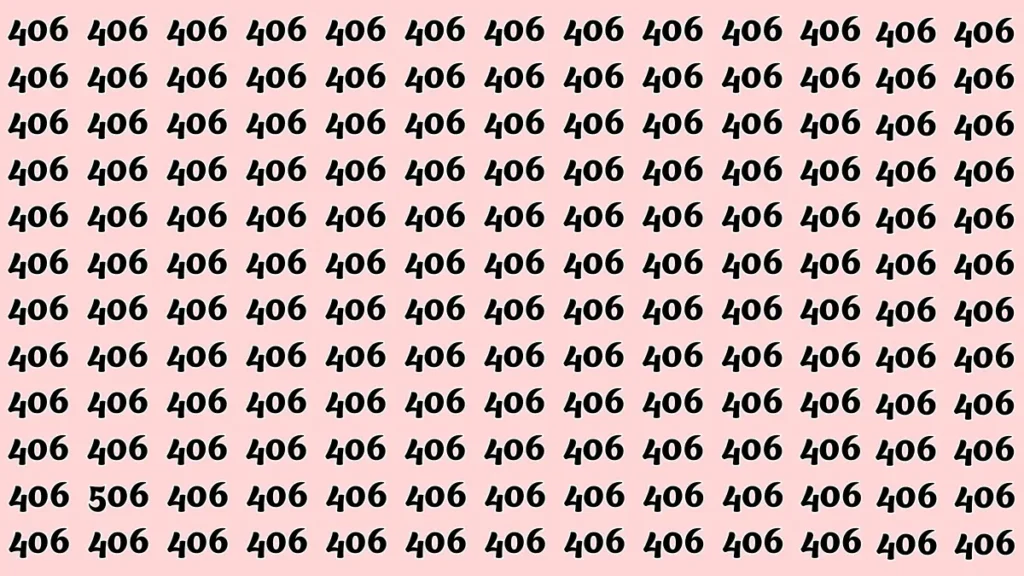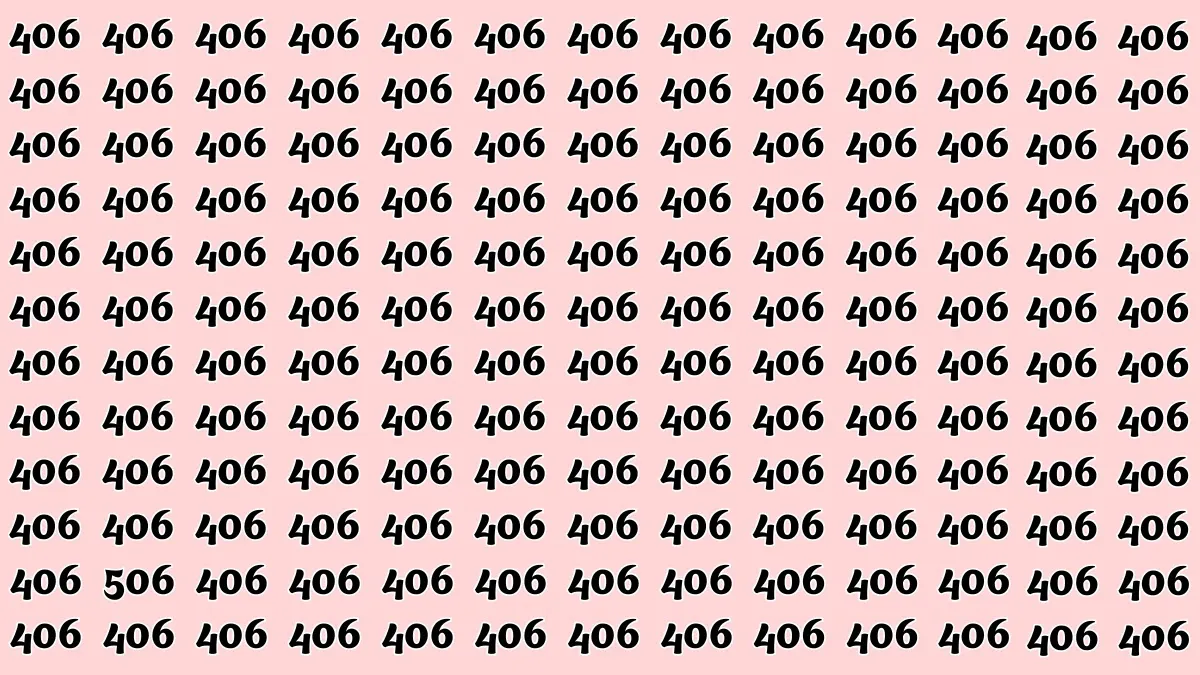Do you think you have what it takes to beat the ultimate optical illusion test? In today’s brain-bending visual challenge, we present an image that hides a number so cleverly, only those with razor-sharp vision and laser-like focus can find it — and you’ve got just 8 seconds to do it. The number to find? 506.
If you love testing your observation skills or just enjoy mind tricks, this one’s for you.
What Is an Optical Illusion?
An optical illusion is a visual image that’s designed to trick your eyes and brain. These illusions use patterns, colors, and shapes in such a way that your mind struggles to interpret what it’s seeing accurately. Some illusions play with depth and motion, while others — like this challenge — are all about hidden details.
The “spot the number” type of optical illusion is particularly tricky. The hidden digits are usually camouflaged by similar patterns, distracting colors, or visual noise that makes them difficult to see at first glance.
The 8-Second Challenge
Here’s the challenge:
An image contains a hidden number: 506.
Your goal: Spot the number within 8 seconds.
Sounds simple? Think again. The numbers are blended into the background so well, only the most eagle-eyed individuals can spot them in time.
This type of visual test doesn’t just challenge your eyesight — it also measures how quickly your brain processes and identifies subtle differences in complex patterns. People who are excellent at puzzles or have high attention to detail often perform better in these kinds of challenges.
Why 8 Seconds?
Eight seconds is considered just the right amount of time to separate those who rely on quick instinct and pattern recognition from those who might second-guess or miss hidden details entirely. It adds pressure, making the brain work harder and faster.
Research has shown that short-timed puzzles like this one activate the brain’s visual cortex and improve mental agility over time. Think of it as a fun workout for your brain!
Can You Spot the Number 506?
[Insert the actual optical illusion image here, if available.]
Set a timer for 8 seconds and give it your best shot. Look closely, but don’t stare too long at one area — the key to solving these illusions is to scan the whole image quickly and trust your instincts.
Found it? If you did it under 8 seconds, congratulations — you’ve got eagle eyes and elite pattern recognition skills!
Still searching? Don’t worry, you’re not alone. Many people fail on their first try. The trick is to relax your eyes slightly and try looking at the image from a different angle or distance.
The Reveal: Where Is 506?

If you couldn’t find it, here’s the secret: The number 506 is usually hidden using clever blending — either by matching the background’s colors, layering the digits under lines or swirls, or positioning the numbers at unusual angles.
Typically, the number appears slightly bolder or fainter than the surrounding pattern. Once you see it, it’s impossible to “unsee” it!
[Insert image with circled or highlighted solution.]
What Your Result Says About You
- Found it in 3–5 seconds?
You likely have exceptional visual perception, strong concentration, and quick pattern recognition. - Found it in 6–8 seconds?
Great job! Your observation skills are solid and your focus is strong. - Took longer than 8 seconds or couldn’t find it?
Don’t stress! Optical illusions are meant to challenge your perception. With practice, your brain gets better at identifying hidden patterns.
Why These Illusions Are Good for You
Regularly solving visual puzzles like this does more than just pass the time — it’s actually good for your cognitive health. Benefits include:
- Improved focus and attention to detail
- Better memory and mental clarity
- Enhanced problem-solving abilities
- Reduced mental fatigue
It’s no wonder brain games and visual challenges are used in cognitive therapy and mental training apps.
Final Thoughts
Optical illusions are more than just internet fun — they’re a fascinating glimpse into how our brains interpret reality. And today’s 8-second challenge to spot the hidden 506 proves that not everything is as it seems at first glance.
So, whether you found the number right away or not, remember this: Every time you try, you’re training your brain to see a little sharper, think a little quicker, and focus a little better.
Up for another challenge? Stay tuned — your next visual test might be just around the corner.

